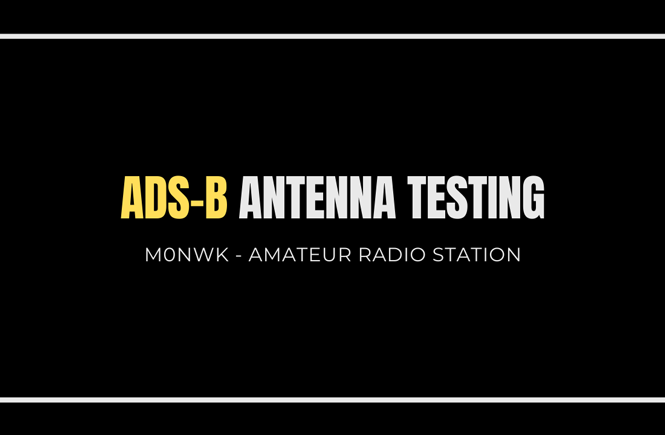Last year I purchased the 144LFA8, 8 element Yagi for 2 metres from EAntenna but it’s been in it’s box ever since.
That is until now. It’s May 2021 and we have thunder and lightning so with the mast down, I have decided today I am going to build it so I can replace my 5 element one.
In this post I will show you how I built, tuned and installed the antenna on my mast.
Click on the continue button to see more.
ANTENNA SPECIFICATIONS
Frequency range:144 ~ 146 MHz
Gain:13,29 dBiF / B:25,69
dBSWR:1,1:1 ~ 1,2:1
Impedance:50 Ohm
Maximum power:5 kW
Boom length:3.77
Wind resistance:≥ 200kmh / ≥ 125mph
Weight:4.25 kg / 9.4 Pounds
BUILDING THE ANTENNA
The antenna was very simple to build using the instructions provided, taking only around 30 minutes to complete.
Parts were easy to identify by length of elements and because parts of the boom were marked. A 10mm spanner and Allen key are provided to attach the elements but I also found that I also needed an 8mm socket for the nuts securing the elements and a 13mm spanner for the nuts on the mast clamps; both of which are not provided. These I had in my toolbox.

The boom comes in three parts, fastened together using stainless steel brackets, bolts and washers.
The six directors, driven element and reflector go through holes drilled in the boom and fastened using bolts, washers and nuts. The driven element has an insulator to insulate it from the boom. I applied some grease to the bolts to avoid seizing up.

DRIVEN ELEMENT
This photo shows the driven element close up. Both end pieces are secured using stainless steel jubilee clips so it is adjustable for tuning.

MAST MOUNT
Using the back of a chair, I placed the antenna on it and moved it back and forth in order to find the centre of gravity. I marked the boom and attached the plate and mast clamps.

INSTALLING ON THE MAST
The photo below shows my 44 element WIMO antenna for 23cm (top) and EA270ZB13 2m / 70cm Yagi below it. The EA270ZB13 is the antenna I will be replacing with my new one.

With the EA270ZB13 removed, I attached my new 144LFA8 in the same position.

FEED POINT
As you can see here the feed point comprises of bolts going through each end of the driven element, secured by washers and nuts. Crimp connectors are used to connect coax to the element. In my option this lets the antenna down a bit as there is no protection from the weather.

CHOKE
The antenna requires a choke made of two turns of coax 8cm in diameter. I did this using Messi & Paoloni Ultraflex 7 and mounted it directly under the driven element using tie wraps.
After separating the braid and centre conductor of the coax I twisted it tight and soldered all of the exposed copper. To avoid water getting into the coax I used heat shrink tubing.
After securing both of the crimps I used self-amalgamating tape to further protect the coax.
TUNING
Tuning is achieved by lengthening or shortening the length of the driven element. Less of the end tubing inserted makes the element longer and lower frequency. More end tubing inserted makes the element shorted and higher frequency. My aim is to tune the antenna to the 2M SSB calling frequency 144.300MHz.
I started by inserting only a small amount of end tubing by the same amount both ends, before fastening with the jubilee clip and taking a measurement using my NanoVNA. Resonance was 136.800MHz, so I inserted considerably more tube at both ends and took another measurement. Resonance was 144.630MHz. I pulled the tube out from both ends around 1mm and took another measurement. This time is showed resonance to be 144.320MHz. Happy with that!

NANOVNA V2
Below is a screenshot from my NanoVNA software. Frequency range is 144.000MHz to 146.000MHz. The red marker indicates 144.300Mhz.
SWR is below 1:1.5 across the entire band.
Here is another screen shot together with the data.
And finally another but this time set to frequency range of 140.000MHz to 150MHz.
JOB DONE
Disappointingly it was raining and very windy by the time I had finished installation and tuning so I had to wait until the next day to raise my Tennamast.
Anyway, its up now and I’m looking forward to trying the next UKAC 2M content to see how it performs.
CONCLUSION
My first impressions were that the antenna was easy and straight forward to build, taking only around 1/2 hr to construct and around another 1/2 hr to fix onto the mast and tune. My NanoVNA V2 made tuning easy.
The kit comes complete with a spanner and allen key for assembling the antenna but requires a socket for the nuts that are used to fasten each of the elements to the boom. A spanner is required for the mast clamp bolts too. Some tie wraps are required to make the choke and fasten coax to the boom. ]
Like that of my other EAntenna, I was disappointed the feed point has no protection. Some kind of weather proof box will have been nice.
Finally, all of the elements are made from small diameter aluminium. It is important to not over tighten the bolts because this will bend the elements as I realised – tighten them just enough.
Wildlife does have a tendency to perching on my antennas, including the odd owl and bird of prey so it will be interesting to see how the elements stand up over time.
Why not take a look at my YouTube channel here or Twitter posts here.
You can also register for my website here.
Thanks
73 de M0NWK











